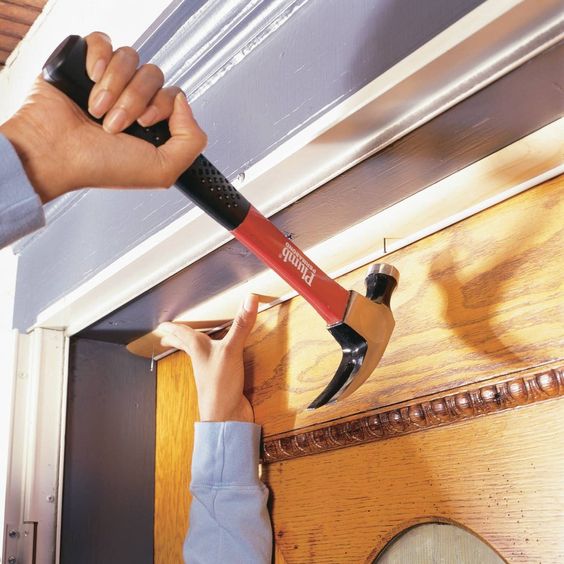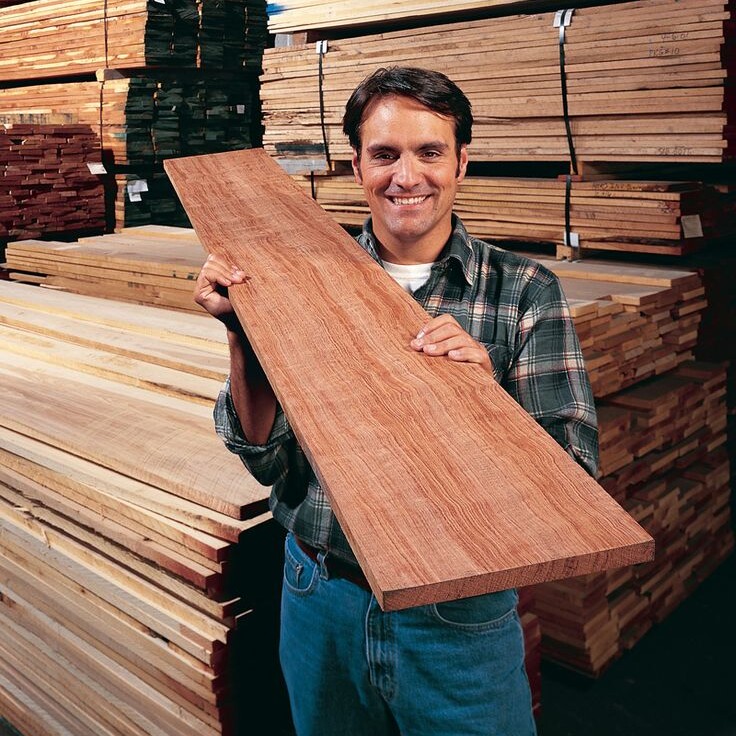
Carpentry of Home repairs is not just for professional handymen or skilled artisans; it’s an invaluable skill set for any homeowner. Whether you’re tightening a loose stair railing or fixing a creaky floorboard, understanding the fundamentals of carpentry can save you time, money, and the inconvenience of waiting for a professional.
In this comprehensive guide, we’ll walk through the basic carpentry skills required for common home repair tasks.
Key Takeaways:
- Essential Skills: Learn basic carpentry techniques and safety measures for home repairs.
- Necessary Tools: Identify the essential tools for your carpentry toolkit.
- Woodworking Joints: Discover the various joints used in carpentry and their applications.
- Understanding Materials: Know the different wood types and their properties for repairs.
- Simple Fixes Explained: Step-by-step instructions on common home repair tasks.
- Maintaining Your Work: Tips on preserving and maintaining your carpentry repairs over time.
Table of Contents
Why Carpenter Skills Matter for Homeowners
For many, the thought of picking up a hammer and nails can seem daunting. Yet, the ability to perform minor carpentry tasks is a skill that pays off in the long run.
Not only does it extend the longevity of your home’s fixtures and structures, but it also provides a sense of accomplishment and the ability to customize your living space to your needs.
Must-Have Tools for Home Repairs
Every homeowner should have a toolkit equipped for carpentry-based home repairs. Here’s what you should include:
| Essential Tools | Purpose |
|---|---|
| Hammer | For driving nails, fitting parts, and breaking objects apart. |
| Screwdrivers (various sizes/types) | For driving screws into different materials. |
| Tape Measure | For precise measuring and marking. |
| Utility Knife | For cutting materials like drywall or trimming wood edges. |
| Level | Ensures structures are plumb and level. |
| Handsaw | For cutting wood materials. |
| Power Drill | For drilling holes and driving screws quickly. |
| Safety Gear | To protect eyes, ears, and respiratory system during work. |
To learn more about the basics and usage of each tool, visit our guide to building a basic toolbox.
Carpentry Skills for Common Repairs
Tightening and Fixing Loose Hinges

One of the most frequent home issues is a loose hinge. This can be quickly rectified by correctly identifying the type of hinge and either tightening the existing screws or replacing them with slightly larger or longer ones for a more secure fit.
Repairing Squeaky Floorboards
A squeaky floor can be incredibly irritating. This issue often arises from two wood surfaces or a wood surface and a nail rubbing together. By properly locating the squeak and securing the two surfaces, you can eliminate the annoyance.
Fixing a Hole in Drywall
Holes in drywall, while unsightly, are not the end of the world. With a patch kit or some backing material, joint compound, and a putty knife, you can patch and paint over these blemishes, making them disappear.
Understanding and Choosing Wood

Different repair jobs may require different types of wood. The nature of the repair, the area it is in, and the type of stress it will need to withstand should all influence your choice of material. Understanding the strengths, weaknesses, and best applications of various wood types is essential. You can get in-depth information on this topic in our wood types guide.
Learning Woodworking Joints

When it comes to more involved repairs, such as fixing broken furniture or shelving, knowing basic woodworking joints is key. Woodworking joints like dovetails, mortise and tenon, or even simple butt joints provide structural integrity and last longer than simple nailed or screwed connections. For further information on when and how to use these joints, check out our guide on woodworking joints.
Measuring and Marking Techniques

Making accurate cuts starts with accurate measuring and marking. Ensure you understand how to properly use a tape measure, carpenter’s square, and marking tools for precise results. If you’re looking to refine these fundamental skills, our resource on measuring and marking is a great place to begin.
Preventing and Fixing Woodworking Mistakes

Mistakes happen to even the most seasoned carpenters. The key is knowing how to correct them without compromising the integrity of your repair. For practical tips on how to handle these setbacks and ensure a smooth finish on your projects, explore our insights on fixing woodworking mistakes.
Applying Basic Carpentry Techniques

Now that you have the basics down, how do you go about applying them to home repairs? Making sure you grasp standard procedures such as cutting, shaping, and joining wood is essential. These skills form the foundation of any repair job you’ll tackle. Check out our complete guide on basic carpentry techniques to learn more.
Caring for and Maintaining Carpentry Tools

To remain effective in home repairs, your tools must be kept in good condition. Properly cleaning, storing, and occasionally sharpening your tools will ensure they’re ready for use when you need them. For maintenance strategies, our resource on tool maintenance and care proves invaluable.
By equipping yourself with knowledge and tools, you transform from a passive homeowner into an active caretaker of your living space. With the right carpentry know-how, the next time a door swings off its hinges or a floorboard comes loose, you’ll have the confidence and skills to handle the problem swiftly and effectively.
In conclusion, the ability to perform simple carpentry tasks allows homeowners to save on repair costs, maintain their homes, and even inject a bit of personal flair into their living spaces. Regular maintenance, combined with timely repairs, not only preserves the appearance and functionality of your home but also enhances its value over time.
Keep up with Carpentrify for more insights and guidance on turning your home repairs into rewarding DIY projects.
FAQ
What basic carpentry skills should I learn for home repairs?
Learning how to measure and mark accurately, cut wood, drive nails and screws, and apply basic woodworking joints is essential. Additionally, knowing how to use power tools safely, such as drills and saws, will be beneficial for larger repair tasks.
Which are the essential carpentry tools I need for home repairs?
The essential tools include a hammer, tape measure, various screwdrivers, a level, a utility knife, saws for cutting wood (like a handsaw or circular saw), a power drill, and safety gear like goggles and gloves.
How do I fix a squeaky door or floorboard?
For a squeaky door, you can often resolve the issue by tightening the hinges. If a floorboard is the problem, you may need to secure it back into place with screws or nails after locating the squeaky area.
Can I handle electrical work during carpentry repairs?
Electrical work should be approached with caution and knowledge of safety measures. If you’re not experienced or certified, it’s safer to hire a professional electrician for any work involving electricity.
How do I choose the right wood for my home repair project?
Choose wood based on the specific requirements of your project, such as strength, durability, and resistance to moisture. Researching or consulting resources on different wood types will help you make an informed decision.
What should I do if I encounter a mistake during my repair?
First, don’t panic. Assess whether the mistake affects the structural integrity or appearance and take corrective measures. Sometimes, you may need to undo a few steps to rectify the issue. Understanding how to fix woodworking mistakes can guide you through the process.
How often should I maintain my carpentry tools?
You should clean your tools after every use, check for rust or damage regularly, and sharpen cutting tools when necessary. Proper tool maintenance and care extend the life of your tools and ensure they are always ready for use.
Are there any safety precautions I should take when doing carpentry home repairs?
Yes, safety should always be a priority. Wear protective eyewear, hearing protection, and a dust mask, especially when cutting wood or working with power tools. Also, ensure your work area is well-lit and free from clutter to avoid accidents.
Can I use glue for carpentry fixes, or should I always use nails and screws?
Glue can be extremely effective for carpentry repairs, especially when clamped properly and allowed to set. However, nails and screws might be more appropriate for structural repairs. Sometimes, a combination of glue and mechanical fasteners offers the best solution.
By addressing these common questions, homeowners can approach carpentry repairs with greater confidence and safety. Remember, building your skills takes time and practice, so start with small projects and build up to more complex repairs as you become more comfortable with the tools and techniques involved.

